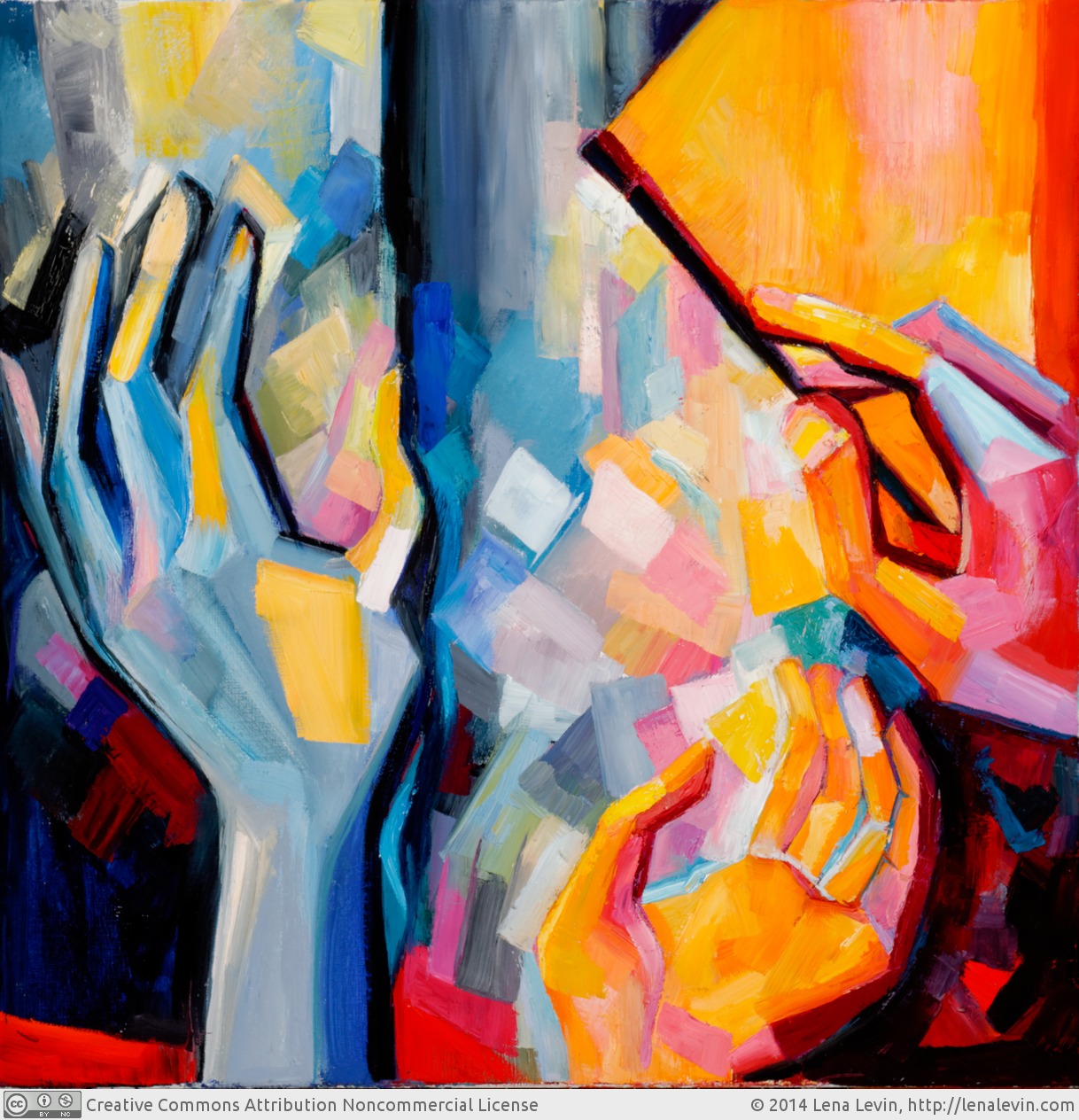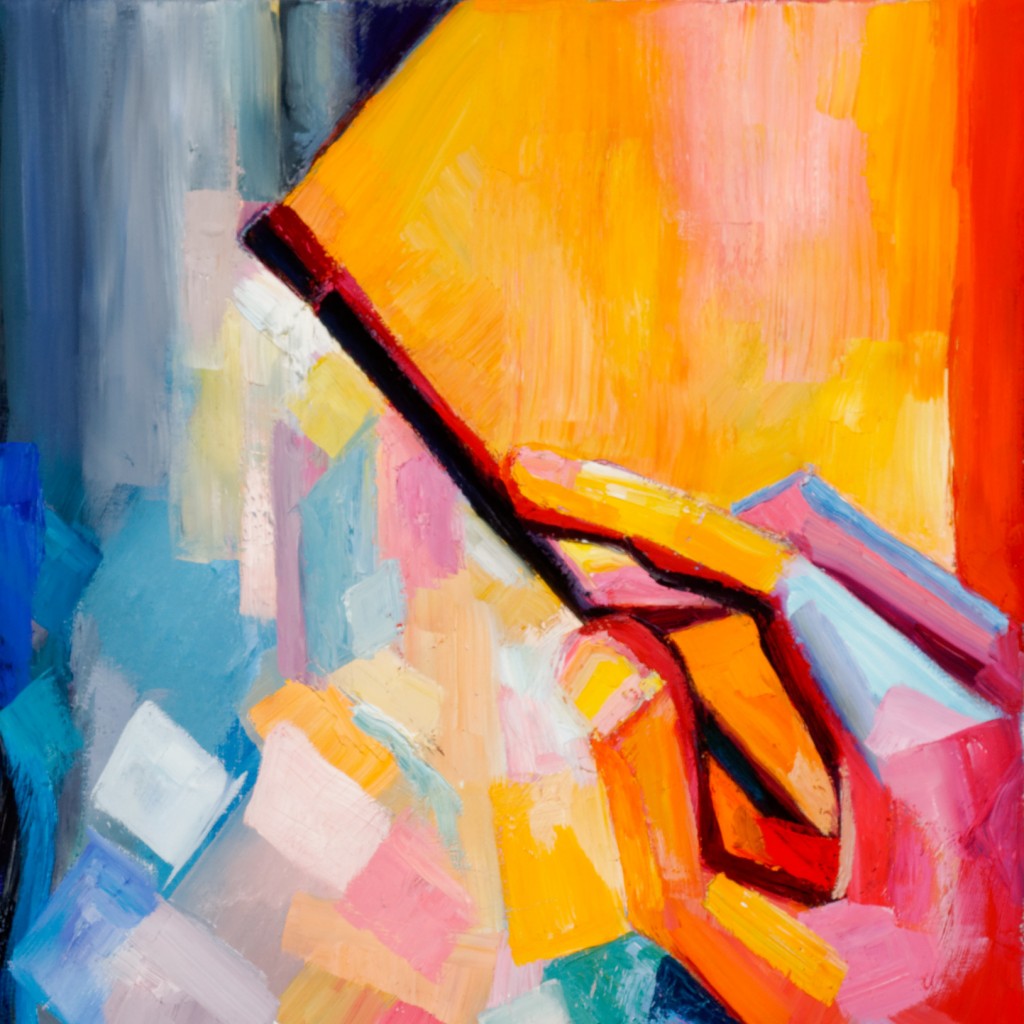
[accordion_item title=”Read the sixty fifth sonnet again…“]
Since brass, nor stone, nor earth, nor boundless sea,
But sad mortality o’er-sways their power,
How with this rage shall beauty hold a plea,
Whose action is no stronger than a flower?
O, how shall summer’s honey breath hold out
Against the wrackful siege of battering days,
When rocks impregnable are not so stout,
Nor gates of steel so strong, but Time decays?
O fearful meditation! where, alack,
Shall Time’s best jewel from Time’s chest lie hid?
Or what strong hand can hold his swift foot back?
Or who his spoil o’er beauty can forbid?
O, none, unless this miracle have might,
That in black ink my love may still shine bright.
[/accordion_item]
[pullquote type=”right”] Wouldn’t holding the flow of time amount to dispelling an illusion, the illusion that there is anything to hold to begin with? [/pullquote]
The first, blurry, visualisation of this sonnet came easily: it’s all about holding something, or failing to hold (the verb hold is repeated thrice in different contexts, in every quatrain). And then there is this beautifully mixed metaphor of strong hand holding Time’s swift foot back in the eleventh line — so hands appeared in the very first sketch for this painting.
The hand imagery also offered a straightforward “translation” of the miracle of the sonnet: poetry transformed into painting. One hand will be holding a brush and actually painting the painting; just like this in this miracle self-references the sonnet, the painting will reference itself (I was indeed painting this hand from life, while working on this very painting).
[feature_headline type=”left” level=”h3″ looks_like=”h6″ icon=””]But what is it that these hands are trying to hold?[/feature_headline]
The question kept teasing me: I was convinced my vision of the future painting was so blurry because I didn’t have the answer, yet I decided to start, in the hope that the answer will come in the process. That’s, after all, what I probably love most about the process of painting: painting as a peculiar way of thinking, a word-less dialogue between the vision and the material. “Wordless” sounds like an oxymoron for a sonnet painting; but it’s only the words of the sonnet that are present: no inner discussions of its meaning or interpretation.
Has the question resolved itself in this painting? The answer is both yes and no. The “yes” of it is this: the hands are trying to grasp the meaning of life. I spent some time looking for a historical grounding for this reading, but it emerged in my mind all by itself in the process of painting, an offspring of this strange interaction between poetry and colour.
It’s there in the painting: this is why there is, in a sense, nothing they hold, except for the chaotic movements of colour and the brush: the meaning of life is as impossible to grasp and hold as summer’s honey breath.
And this is the “no” of it: I don’t know what the meaning of life is, so all I could do was paint the question. Or put it this way: I know the meaning of life as it happens, but one cannot grasp it and cage it — neither in words, nor in concrete images. The blurriness of my initial image, it has turned out, was not an imperfect visualisation; it was its essence.
[feature_headline type=”left” level=”h3″ looks_like=”h6″ icon=””]But Shakespeare doesn’t say a word about the meaning of life, does he?[/feature_headline]
The sonnet is all about the non-existence of immortality, the impossibility of holding Time. Am I not, then, adding something alien to the sonnet, something that was never there at all? Maybe I am — it might even be inevitable (openness to such bizarre interactions with future minds is, arguably, what makes a poem immortal). Still, I believe this reading, the seed of it at least, is right there in the sonnet: immortality is relevant to the life of mortals only insofar as it is conceived of as the locus of meanings, the larger-than-life context of mortal life.
After all, it might have been natural to understand the meaning of life in terms of immortality when the world around humans was immortal. That’s how they looked at it in antiquity:
”Praise, from which came glory and eventually everlasting fame, could be bestowed only upon things already “great,” that is, things that possessed an emerging, shining quality which distinguished them from all others and made glory possible. The great was that which deserved immortality, that which should be admitted to the company of things that lasted forever, surrounding the futility of mortals with their unsurpassable majesty” (Arendt “Between Past and Future”, 1961: 47).
But if the world is mortal, as it is now (and as it evidently was for Shakespeare), then there is no obvious reason why something should be immortal to be meaningful: if something is fleeting, it is not necessarily futile; its fleetingness makes it all the more glorious. And yet, when we see and recognise this emerging, shining quality, the inherited conceptual link in the time-worn semantic network of our intellectual tradition still points to immortality, calls out for it, but there is only a great void where immortality used to be.
[feature_headline type=”left” level=”h3″ looks_like=”h6″ icon=””]Shakespeare sees this shining quality in fleeting beauty, faces the great void, and hopes to fill it with poetry. How? [/feature_headline]
Can art hold the flow of time: hold Time’s swift foot back, hold out against its wrackful siege, hold a plea with its rage? Can it capture the fleeting, shining moment of transient beauty? This, I feel, is just another version of the question I’ve been painting; another way to put its elusive answer in words: what these hands are trying to hold is Time. It’s not easy, but it doesn’t seem as inherently, despairingly impossible as to hold meaning.
Holding a moment, making it “sit still” for a while, even if only within the pictorial space, is the very essence of painting. It’s harder to depict, in a painting, the flow of time, its swift movement. This painting tries to achieve this with two explicit pictorial contrasts: one between movement and stillness, and the other, between (the illusion of) three-dimensionality and two-dimensional flatness.

This latter strategy exploits the way we (or rather: our languages) spatialise Time, that is, the way we think and talk of Time as the fourth spatial dimension, in which we can travel in one direction only, and with the pre-ordained velocity (unless, of course, we are time-travelling in our imagination). As holding the flow of time would reduce this four-dimensional time-space to a three-dimensional single moment, so the painting relinquishes its illusion of three-dimensionality in the bright warm area in the top right corner, above the brush. This area, the “painting within painting”, is both still and flat, overtly two-dimensional: the painting hand holds the flow of time and so protects the shining brightness of summer’s honey breath against the chaotic movement of cold colours.
This gives rise to the final paradox: after all, this painting, as any painting, is still and two-dimensional, whatever its contents and technique; movement and depth are but illusions created in interaction between a painting and its viewer’s sense of vision. The painting hand “collapses” the third dimension and “stops” the movement that were never really there in the first place. It has always been an illusion, a trick of senses, perhaps as illusionary as the fourth spatial dimension, in which our future pretends to exist “before us” and the past, “behind”. Wouldn’t holding the flow of time amount to dispelling an illusion, the illusion that there is anything to hold to begin with — no swift foot, no wrackful siege? Wouldn’t the world then be just like a painting that is still and flat, with neither depth nor movement? Wouldn’t it be boring and utterly devoid of meaning?
I don’t have answers, and these may well be the wrong questions — but these are the questions painting this sonnet leaves me to live with…
[share title=”If you’ve enjoyed reading this post, please consider sharing it with your friends!” facebook=”true” twitter=”true” google_plus=”true” linkedin=”true” pinterest=”true” reddit=”true” email=”true”]